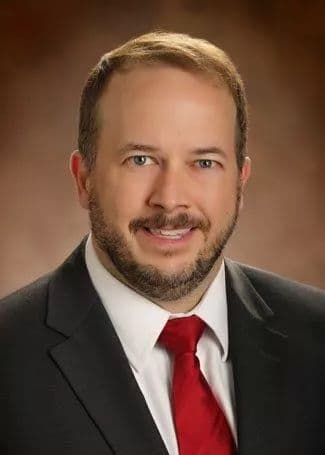

Jon Heck · David Scott
Short v Marvin Keller Trucking - Jon Heck & David Scott - Webinar Hosted by Joe Fried
![]() June 16, 2022 ||TLU n Demand
June 16, 2022 ||TLU n Demand
Joe Fried
David Scott
Jon Heck
This case concerned a fatality trucking crash which occurred when the defendant’s semi-truck crossed the center median of Interstate 64 in eastern Kentucky and crashed into the plaintiff, Christopher Short. Chris was a 44-year-old husband and father of four children, two of whom were minors at the time of his death. The ten second video from defendant’s dashcam showed him slumping over to his left and losing control in the seconds before the collision. His hands never left the steering wheel. Defendants retained a Johns Hopkins pulmonologist, Dr. Phillip Buecher who reviewed the defendant driver’s medical records, DOT medical exams and the dashcam video and claimed the truck driver experienced “cough syncope” and, as such, suffered a sudden unforeseeable medial emergency.
During Plaintiff’s case we focused on the fact that three days before the collision the defendant driver went to his primary care provider with complaints of chronic fatigue, coughing until gagging and becoming dizzy, and lung congestion. He was diagnosed with chronic bronchitis, recurrent sinusitis and pink eye in both eyes. He was prescribed an antibiotic, steroid and albuterol inhaler. He was advised to take Nyquil and Benadryl. Based on the travel logs and deposition testimony we established that on the day of the collision the defendant driver started driving at 5:38 AM and made it all of 36 minutes before he had to pull off and take a thirty-minute nap. He began driving and stopped a second time 37 minutes later. During this stop the defendant driver testified that he got out of his truck and walked around and got some coffee. The total time for this second stop was 35 minutes. The defendant driver then drove two and half hours without other stop until he crossed over the median and killed Chris. Based on this information Plaintiff established the defendant likely fell asleep, as the truck driver was impaired by illness and fatigue. In addition. late discovery provided by the Defendants established he’d been suffering from sleep apnea for years. In fact, on his first DOT physical in 2009 he disclosed that he had problems with excessive sleepiness and snoring. Based on this disclosure his first employer ordered that he undergo a sleep study as it was suspected at that time (ten years before the collision) that the defendant driver suffered from sleep apnea. Rather than undergo the sleep study the defendant driver switched employers and never again disclosed his sleeping problems despite being specifically asked on his DOT medical exams. When the defendant driver did undergo a sleep study two months after the collision one of the historians was his ex-wife who advised she was aware of the fact that he would stop breathing in his sleep and snore excessively and that this behavior had gone on for years. The trial took place in federal district court in Lexington, Kentucky. It began on November 29, 2021 and lasted five days. The eight-member jury returned a unanimous verdict for $10,000,000, which was comprised of the loss of earnings and consortium claims by the surviving spouse and two minor children.
Teaching Points:
1. Discovery—Don’t rely on the Defense to produce records they obtain. We got lucky that the defense dropped the smoking gun records on us two weeks before trial. [(a) Hospital records showing need for sleep apnea study 10 years prior to the collision and which proved he lied on subsequent CDL medical exams, and (b) the post-crash sleep apnea study that showed years of problems]. Getting records two weeks before trial that helped our case left us with this decision: do we ask for a continuance or sanctions or both? Or go forward with the trial knowing we would get the defendant driver’s medical records in through the defendant. We opted to go forward.
2. Get Feedback on the Case—Focus group if you can, involve your staff on the case and talk it out, attend seminars and learn strategies and approaches. (ATAA and TLU). One of the many important points we learned from the focus group was that the jury tended to blame the doctors who approved the defendant to drive despite him being physically unfit to do so. Once we realized this possibility—that the jury might blame the doctors more than the driver or the trucking company—we structured our arguments and expert testimony that the DOT medial exam is only as good as the honestly s the patient.
3. Strategic Thinking—Per Joe-How do you win even if they are right? Meeting with Joe at the TLU breakout was particularly helpful to understand the concept of thinking around the defense. This driver should have never been on the road and so even if he had a medical emergency (an episode of cough syncope)—his negligence well predated the day of the crash let alone the 10 seconds on the video.
4. Strategic Presentation–We deliberately used a non-argumentative opening which was “Rules of the Road” based. We gave the concepts and issues that would arise in testimony, but we didn’t go for the jugular in opening or try to be overly persuasive. We knew that we had some effective cross of the defendant and his medical experts, but that was going to unfold during the week. By the closing, the jury was more receptive to how we stitched together the proof and what it meant for our client’s damages.
Details—We had a real battle with the Judge about getting any federal trucking regs in evidence. The Judge felt that he was giving the law, and the fed regs could not be exhibit because the regulatory language was not the language he was going to use in the instructions. We lost the argument that the regs defined his duty and was the law—judge didn’t see it that way. We were able to pivot and get the regulation in through our trucking expert as a demonstrative exhibit to show that the Defendant’s training informed him that he should not have been driving.
If you can't attend Live, Watch On Demand